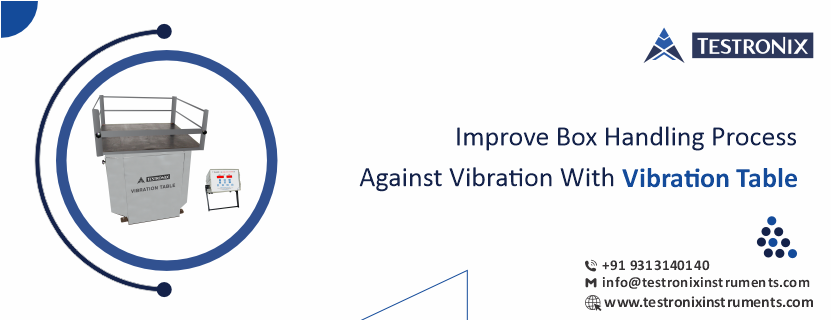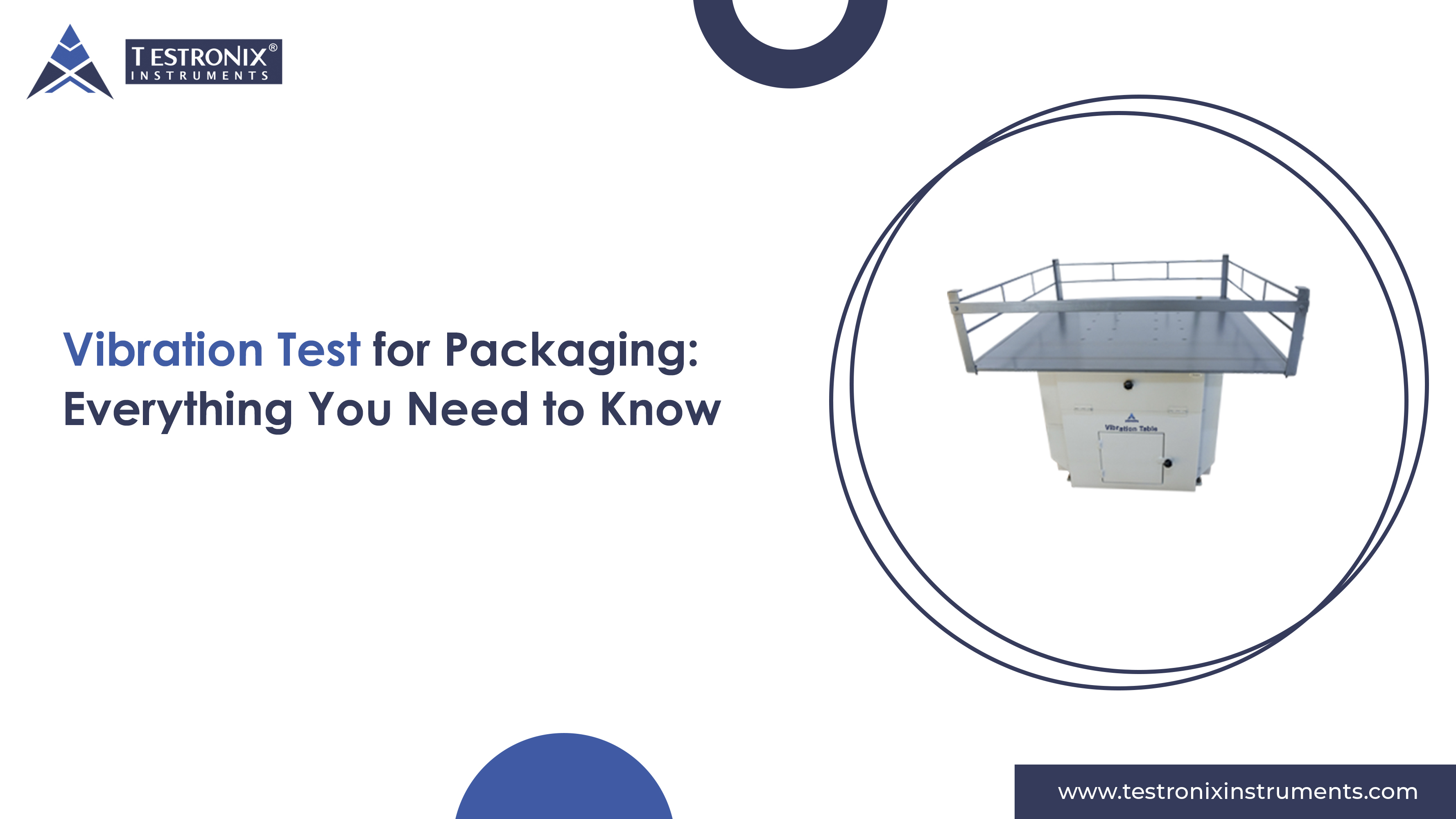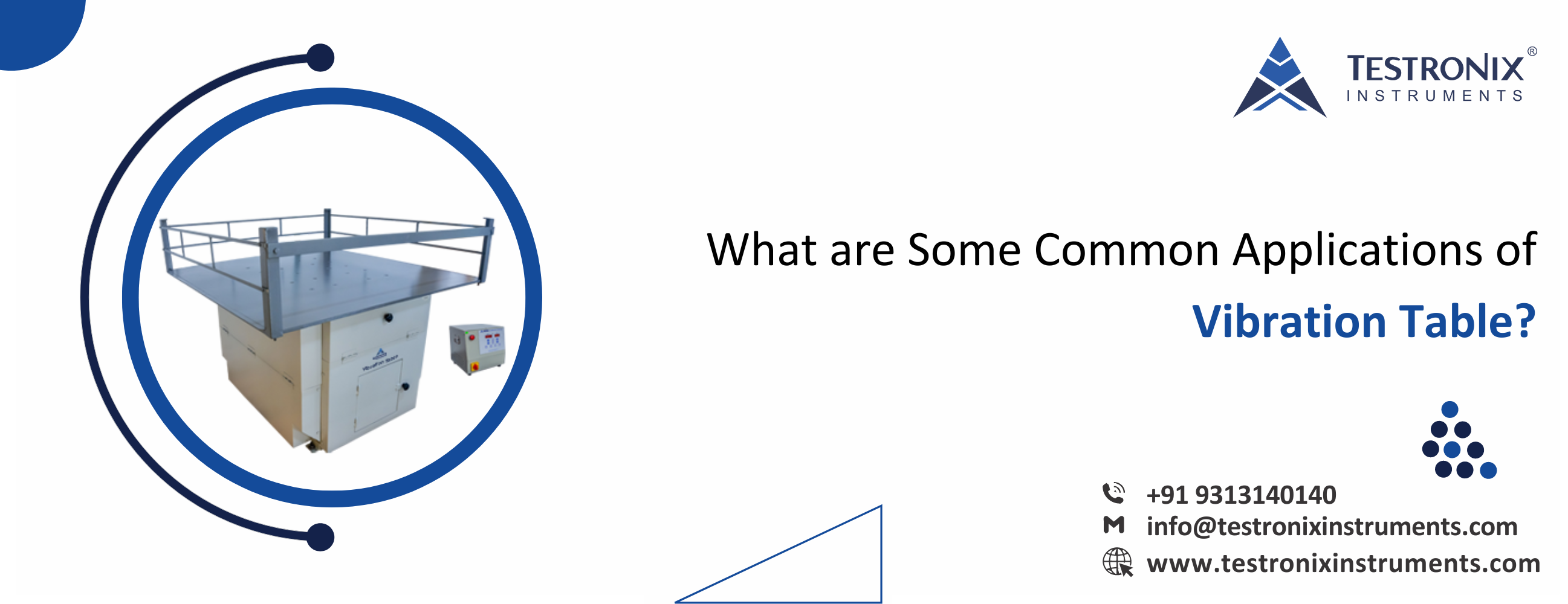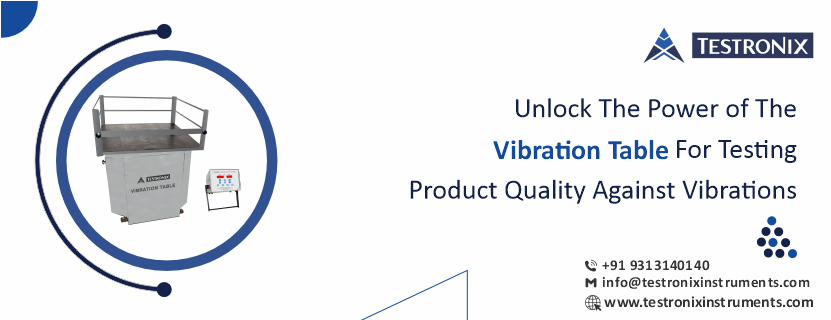Virtually all products nowadays, such as mobile phones and automobile parts, electronic systems and domestic appliances, and industrial machines, are exposed to all forms of external vibration when being transported, stored, or used in any way. The result of this vibration could be a loose part, which is prone to fatigue failure, cracks, noises, or a complete product failure.
A vibration tester, an essential element in quality assurance, normally avoids such problems. Before products reach the market, a vibration tester enables industries to comprehend their behavior under simulated vibration conditions.
What is a Vibration Tester?
A vibration tester is an electronic unit for measuring and analyzing vibrations in machines or products. Handheld meters can be used to measure vibrations and check the health of machines (i.e., an engine or pump). Another type of vibration tester is a larger machine designed to test products by vibrating them.
The larger vibration tester is used to mimic the vibration a package or electronic part can experience during transit. Vibration testers can be used to test vibration in terms of acceleration, velocity, and displacement to identify problems, aid in quality control, and test durability.
Types of Vibration Tester

-
Electrodynamic Vibration Testers
These are the most advanced and widely used vibration testing machines. Electromagnetic induction serves as their working principle, and they function similarly to loudspeakers. ED shakers are capable of providing a frequency range from very low to extremely high and can be best utilized in precision testing in the aerospace, automotive, and electronics industries.
-
Mechanical Vibration Testers
Mechanical vibration machines utilize mechanical motion which is obtained from rotating unbalanced masses or cam-based mechanisms. These testers are ideal for repeated vibration conditions in applications such as transportation simulation.
-
Hydraulic Vibration Testers
Hydraulic systems utilize hydraulic fluid to produce powerful vibrations at low frequency. They are consequently primarily used to test large or heavy parts, which can include automotive assemblies, parts of aircraft, and structural components. Hydraulic vibrators can produce high force and are therefore appropriate for fatigue and durability testing.
-
Transportation Vibration Simulators
These machines simulate the vibration conditions that would arise in trucks or rail transportation. In packaging industries, these are commonly used to prevent any damage during shipment. In a transport simulator, road profiles, uneven surfaces, and continuous vibration patterns are reproduced.
-
Piezoelectric Vibration Machines
Piezoelectric machines are responsive, low-power, and capable of synchronous control, which allows them to be applied to research and development, material characterization, and other applications that demand the lowest possible reproduction of vibration.
How Vibration Tester Works

A vibration tester operates by creating a controlled motion that transmits mechanical energy into the test specimen. The operation principle will depend on the type of machine—electromagnetic, hydraulic, or mechanical—but all principles of operation are fundamentally the same. There will be a vibration generator or shaker, a power amplifier, a control system for the operator to set test parameters, and a specimen fixture with clamping. The control system permits the operator to set test parameters, such as frequency, amplitude, acceleration, and duration of the test. Once the machine is energized, the machine creates an oscillating motion, while sensors measure how the product reacts to the oscillating forces.
The applied vibrations generated during testing replicate real-life vibrations such as road bumps, engine vibrations, drops, shocks, or repetitive vibrations in transportation. Modern vibration testers utilize a closed-loop control system coupled with an accelerometer and digital software to recreate use patterns and control the vibration. The system will collect performance data such as displacements, stress points, cracks, resonance behavior, etc. Such data will give an engineer the information needed to assess the structure for integrity, identify potential failure zones, and improve product liability.
Benefits of Using Vibration Tester
Ensures Product Reliability
Vibration testers test the product's performance under realistic vibration conditions. The performance and durability test can be done with this by emulating transportation, handling, or operational vibrations. This method ultimately leads to fewer unexpected failures, enhances customer confidence, and guarantees functional maintenance throughout the product's lifespan.
Identifies Weak Points in Design
The vibration testing is a technique applied to identify the flaws of a structure, tabs, furniture that is liable to be loose, or any unstable joints in a product. In case engineers detect these problems in time, they could correct the materials to align the components or redesign the item. Engineers can avert premature failures and ensure the stability and long-term viability of a successful product in this way.
Enhances Safety
Vibration spectacles are used in fields like automotive, aerospace, and defense to ensure that components tolerate stress without failure because even a minor failure could indicate serious consequences. The rationale behind ensuring that critical components are stable during periods of stress is to mitigate the potential for harm and improve safety for the user throughout the product's life cycle.
Reduces Manufacturing Costs
Early product testing also helps the manufacturers identify and correct any flaws or problems that may be in the product before it is mass-produced, which saves them from expensive recall, warranty, and repair costs. Vibration testing in enhancing product designs at an earlier stage not only saves the company on the long-term cost of manufacturing products but also allows the company to save money and, at the same time, produce high-quality and reliable products for the customers.
Improved Compliance with standards.
International standards that mandate the use of vibration testing for product certification include ASTM, ISO, IEC, and MIL-STD, which have been applied across various industries. Vibration tester assists in certifying that the products are up to the standard of certification, and this may help gain more acceptance in the market and avoid issues with regulatory authorities and also assure the customers that the product is good and safe in their industry.
Supports Research & Development (R&D)
Vibration testers help engineers to study material behavior, prototype strength, and product performance under stress. This allows R&D teams to experiment with new designs, compare alternatives, and optimize product structures. The insights gained will help speed up innovation and assist companies in quickly developing advanced and reliable products.
Applications of the Vibration Tester
Automotive Industry
Engines, road conditions, and vehicle movement subject car components to constant vibration. Vibration testing is performed on applications, such as dash panels, suspension systems, electrical modules, and sensors. The testing provides confidence that the components will remain stable, have sufficient longevity, will not create noise, and will operate properly throughout the life of the vehicle, resulting in improved safety, comfort, and performance.
Aerospace & Defense
While an aircraft, missile, satellite, or other defense/aerospace system is ridden with extreme vibrations during the processes of launch, flight, and landing, vibration test customers can gain the assurance of structural integrity and the reliability of components under extreme multi-axis vibration simulation. These are key indicators of whether mission-critical equipment is suitable for use in extreme environments and meets the standards for both operational safety and industry requirements.
Electronics and Appliances
Vibration damage has the potential to be detrimental to electronic devices, such as circuit boards, smartphones, batteries, and appliances for the home. Vibration testing is a critical part of solder joint assessment for strength and bonding component stability inside an assembly to ensure products do not fail during shipping, handling, and use. Vibration testing supports product reliability and is an assurance to the consumer.
Packaging and Logistics
Packaging and Logistics Transport vibration simulators test shipping boxes, pallets, and containers against real-world transportation vibrations. It assists various companies in finding weaknesses in packaging and helps improve structural strength. Improved packaging prevents the occurrence of product damage during shipment, reduces customer complaints, and provides safe delivery along long-distance logistics networks.
Industrial Machinery
Gears, bearings, motors, mechanical assemblies, and other mechanical parts have to endure the hard operational vibrations. Vibration testers enable fatigue, wear, and stability to be checked in the long term. This is what enables machines to operate efficiently and reduces downtime, and this provides a much safer working environment in industries like manufacturing, mining, and building.
Conclusion
A vibration tester is indispensable in modern manufacturing. It essentially helps industries measure the durability, safety, and performance of a product under simulated vibration conditions. With the increased demand for products with high quality and a long service life, vibration testing has gained much importance in design validation and quality assurance.
Whether it is an automotive component, an aerospace part, electronic equipment, packaging, or any consumer good, vibration testers enable products to achieve international standards and ensure reliable performance throughout.






